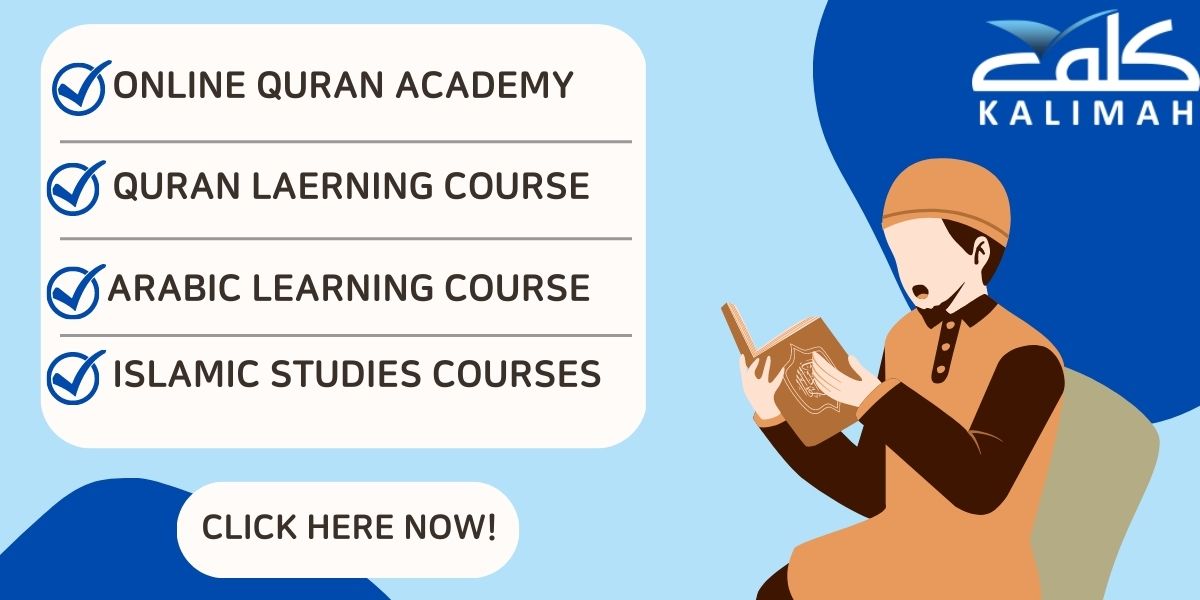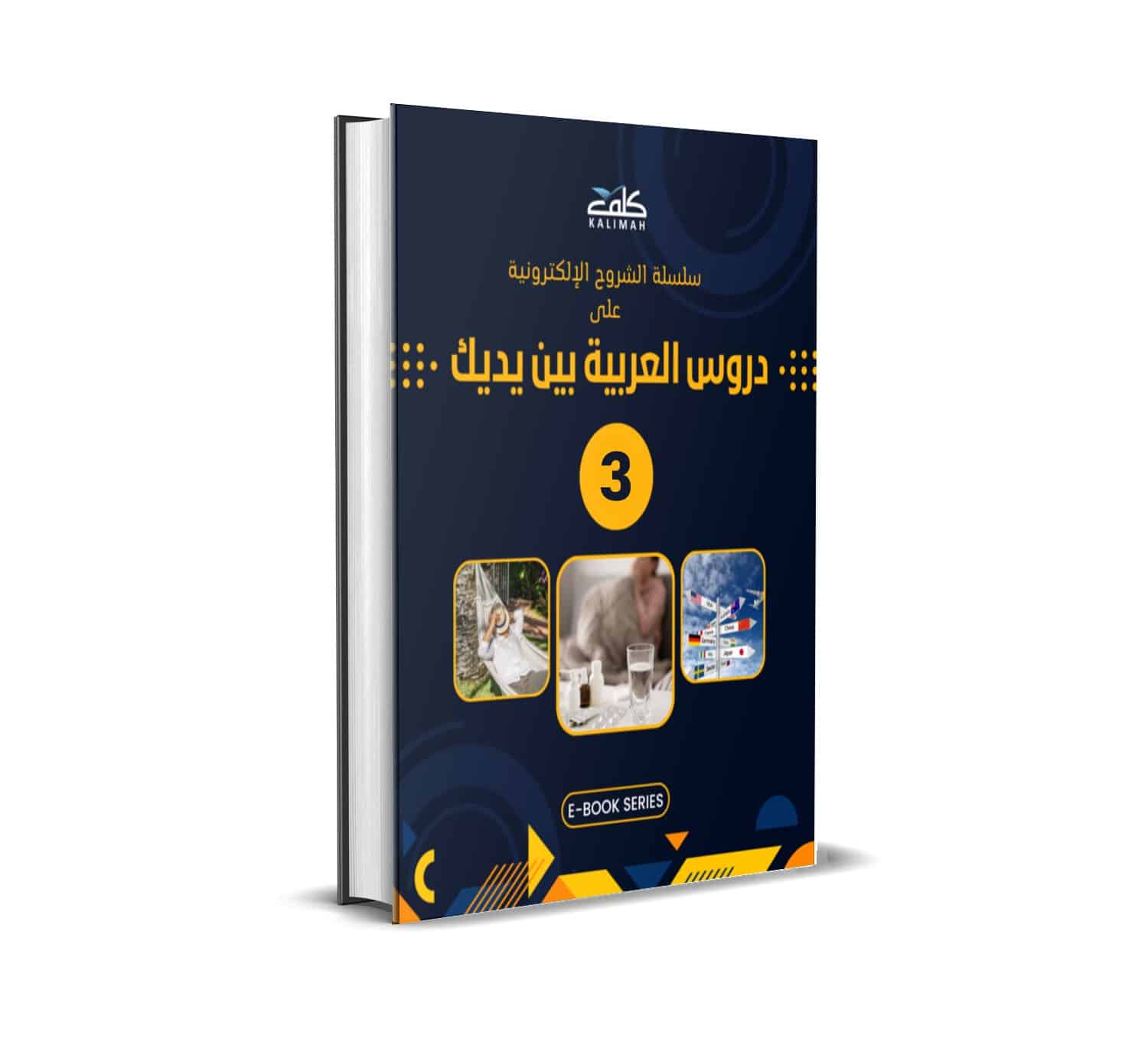In a nutshell: Modern Standard Arabic (MSA) is the elegant bridge to the Arabic world, serving as the formal language for media, education, and literature. Evolving from classical Arabic, it features a unique alphabet and essential pronunciation marks, making it crucial for learners. While not used in casual conversation—where local dialects thrive—MSA connects cultures and opens doors to literature and formal communication, making it a vital foundation for anyone eager to explore the richness of the Arabic language and heritage.
If you are reading this, you might have heard about different forms of the Arabic language, and it can be confusing, right? One of these forms is called Modern Standard Arabic or MSA. But what is it? Why is it important? And should you learn it? Let me help you understand.
What is Modern Standard Arabic?
Modern Standard Arabic, or MSA (in Arabic: الفصحى المعاصرة, pronounced “al-Fuṣḥa al-Muʿāṣirah”), is the form of Arabic used in books, newspapers, official documents, TV news, and speeches. It is the standardized and literary version of Arabic. Think of MSA as the “formal” version of Arabic that you see and hear in education, media, and formal settings.
MSA is based on classical Arabic, the language of the Quran and early Islamic literature, but it has evolved to meet modern needs. So, when you learn MSA, you are not just learning a language—you are connecting to centuries of history, culture, and religion.

The Modern Standard Arabic Alphabet
The alphabet of Modern Standard Arabic (MSA) is the same as the alphabet used in all other forms of the Arabic language, be it classical Arabic, colloquial Arabic (العامية), or any other. The modern standard Arabic alphabet consists of 28 letters (أحرف), each with a unique shape that changes depending on its position in the word (beginning, middle, or end).
For example, the letter جيم (Jeem) has three different shapes depending on its position in a word:
- ج (Jeem at the beginning)
- ــجـ (Jeem in the middle)
- ــج (Jeem at the end)
Ustadh Hamada Mphamed, one of Kalimah’s experienced teachers who has over 10 years of experience teaching Arabic to non-native speakers, said:
“You don’t have to learn all of these forms at once. Break it into small chunks. Start with learning how each letter looks when it stands alone, then move to how it looks connected in the word.”
*From Kalimah’s curriculum for online Arabic Course.
It is very important to pay attention to this foundation. It is worth mentioning that in order for the foundation of learning the Arabic alphabet to be strong, it must be accompanied in the learning process by learning tashkeel (diacritics) and mudood (long vowels).
- Tashkeel are the little marks that we put above or below the letters to show the short vowel sounds. For example:
- بَ = /ba/
- بُ = /bu/
- بِ = /bi/
- Mudood are the letters that we use to show the long vowel sounds. They are:
- ا = /aa/ as in “father”
- و = /uu/ as in “boot”
- ي = /ii/ as in “feet”
*From Kalimah’s curriculum for online Arabic Course.
Modern Standard Arabic Alphabet Chart
To make it easier, here’s a more comprehensive Modern Standard Arabic alphabet chart:
| Arabic Letter | Name | Sound | Example | Transliteration |
| أ | Alif | “a” as in “apple” | أحمد | Aḥmad |
| ب | Ba | “b” as in “bat” | بيت | bayt |
| ت | Ta | “t” as in “tea” | تفاح | tuffāḥ |
| ث | Tha | “th” as in “three” | ثلج | thalg |
| ج | Jim | “j” as in “jam” | جمال | jamāl |
| ح | Ha | “h” (a deep sound) | حسن | ḥasan |
| خ | Kha | “kh” (like the “ch” in “Bach”) | خبز | khubz |
| د | Dal | “d” as in “day” | دار | dār |
| ذ | Thal | “th” as in “the” | ذهب | thahab |
| ر | Ra | “r” (rolled) | رجل | rajul |
| ز | Zay | “z” as in “zoo” | زهرة | zahrah |
| س | Seen | “s” as in “sea” | سمك | samak |
| ش | Sheen | “sh” as in “sheep” | شمس | shams |
| ص | Sad | “s” (emphatic) | صبر | ṣabr |
| ض | Dad | “d” (emphatic) | ضوء | ḍaw’ |
| ط | Ta | “t” (emphatic) | طاولة | ṭāwilah |
| ظ | Tha | “th” (emphatic) | ظرف | ẓarf |
| ع | `Ain | “a” (like a catch in the throat) | عين | `ayn |
| غ | Ghain | “gh” (a gargling sound) | غزال | ghazāl |
| ف | Fa | “f” as in “fan” | فنجان | finjān |
| ق | Qaf | “q” (a deeper “k” sound) | قلب | qalb |
| ك | Kaf | “k” as in “kite” | كتاب | kitāb |
| ل | Lam | “l” as in “lamp” | ليمون | laymūn |
| م | Meem | “m” as in “man” | مدرسة | madrasah |
| ن | Noon | “n” as in “nose” | نهر | nahr |
| ه | Ha | “h” as in “hat” | هواء | hawā’ |
| و | Waw | “w” as in “water” or “oo” as in “boot” | وردة | wardah |
| ي | Ya | “y” as in “yellow” or “ee” as in “feet” | يد | yad |
These are just a few letters to start with, but they set the foundation. Each letter is like a piece of a beautiful mosaic that forms the Arabic language.
Exercise:
Here is a playlist from the Kalimah Center Youtube channel to learn how to write each letter.
Then you can use Kalimah Center’s tracing paper to practice writing each letter accurately.
Books and Textbooks for Learning Modern Standard Arabic
Here are some highly recommended books and textbooks for learning Modern Standard Arabic (MSA), catering to various learning styles and levels:
1. Iqraa’
Iqraa’ is very good for learning the Arabic letters (الحروف), the short vowel marks (التشكيل), and the long vowels (المدود). It’s like a first step for beginners.
2. Al-Tamheed
Al-Tamheed helps you start to build sentences and understand basic grammar. It’s good after you learn the alphabet and want to start reading and writing a little bit.
3. Al-Kitaab fii Ta’allum al-‘Arabiyya
A comprehensive series widely used in universities and language schools. It covers all aspects of MSA, including grammar, vocabulary, reading, and writing.
4. Mastering Arabic
A self-study course for beginners and intermediate learners. It focuses on practical communication skills, with a clear and engaging approach.
5. Ahlan wa Sahlan
A popular beginner-level textbook that emphasizes conversation and everyday vocabulary. It’s known for its clear explanations and cultural insights.
Is Modern Standard Arabic Spoken?
Yes Modern Standard Arabic is spoken. However, it is not usually spoken in day-to-day conversations; it’s more like the formal dress you wear on special occasions.
For everyday communication, Arabs use their local dialects, like Egyptian, Levantine, or Gulf Arabic.
However, MSA is still incredibly useful because it is the language of the media, literature, and education. If you watch the news or read books, you will hear and see MSA.
Is Modern Standard Arabic Useful?
Absolutely, yes! MSA opens the door to understanding all the Arabic dialects. If you learn MSA, you can read newspapers, books, and official documents. It is also the language of Islam, so if you are interested in reading the Qur’an in its original form, MSA is a must. Moreover, knowing MSA can help you in careers like translation, international relations, and even business.
And if you’re ready to start this journey, Kalimah Center is the perfect place for you. Our approach is based on creating a supportive and challenging environment where students feel comfortable taking risks and making mistakes. We use a variety of teaching methods, including interactive exercises, role-playing, and real-world scenarios, to make learning fun and engaging.
But don’t just take our word for it. Listen to what our students have to say:
At Kalimah Center, we’re not just teachers; we’re your partners on your Arabic learning journey. We’re here to support you every step of the way, from your first hesitant “salaam” to fluent conversations.
Sign up for a FREE trial class of our Modern Standard Arabic course. See if Kalimah Center is right for you.
Modern Standard Arabic Numbers
Arabic numbers are used everywhere, but did you know that the Arabic numerals used in the West (0, 1, 2, 3, etc.) actually originated in the Arab world? In Arabic, numbers are written from left to right, just like in English:
| Number | Arabic | Transliteration |
| 0 | ٠ | sifr |
| 1 | ١ | wāḥid |
| 2 | ٢ | ithnān |
| 3 | ٣ | thalāthah |
| 4 | ٤ | ʾarbaʿah |
| 5 | ٥ | khamsah |
| 6 | ٦ | sittah |
| 7 | ٧ | sabʿah |
| 8 | ٨ | thamāniyah |
| 9 | ٩ | tisʿah |
| 10 | ١٠ | ʿasharah |
Most Used Modern Standard Arabic Words
When you begin learning Modern Standard Arabic (MSA), you’ll quickly encounter some words that are used frequently across various contexts. These words form the foundation of the language and are essential for basic communication. Here are a few of the most common words you’ll come across:
- سلام (Salaam): This means “peace,” but it’s often used in the greeting “السلام عليكم” (As-salamu alaykum), meaning “Peace be upon you.” It’s a common way to say hello in Arabic, especially in formal situations.
- نعم (Na’am): This is the word for “yes.” You’ll hear this often in conversations and see it in written texts.
- لا (La): This is the word for “no.” Simple, yet crucial in many situations.
- شكراً (Shukran): This means “thank you.” It’s a polite expression of gratitude that you’ll use often.
- من فضلك (Min fadlik): This means “please” and is used to make requests more polite.
- كتاب (Kitaab): The word for “book.” Since books are central to learning, this word is one of the first you’ll learn.
Most Used Modern Standard Arabic Verbs
Verbs are the action words in a language, and in MSA, some verbs are used more frequently than others. Here are a few essential verbs that you’ll encounter often:
- يذهب (Yadhhab): This verb means “to go.” For example, “أنا أذهب إلى المدرسة” (Ana adhhab ila al-madrasa) means “I go to school.”
- يأكل (Ya’kul): This means “to eat.” A sentence like “هو يأكل تفاحة” (Huwa ya’kul tufaaha) means “He eats an apple.”
- يشرب (Yashrab): This verb means “to drink.” For example, “هي تشرب ماء” (Hiya tashrab maa’) means “She drinks water.”
- يكتب (Yaktub): This means “to write.” An example sentence is “أنا أكتب رسالة” (Ana aktub risaala), meaning “I write a letter.”
- يريد (Yureed): This verb means “to want.” You can say “أنا أريد قهوة” (Ana ureed qahwa), meaning “I want coffee.”
- رأى (ra’a) – “To see”
- عمل (ʿamila) – “To work”
- قال (qaala) – “To say”
- أخذ (akhadha) – “To take”
- جاء (jaa’a) – “To come”
- فعل (faʿala) – “To do”
Mastering these verbs will significantly improve your ability to express actions and desires in MSA. They are foundational and will be used in various forms as you progress in your studies.
Most Used Modern Standard Arabic Phrases
Learning phrases is an excellent way to quickly improve your communication skills in any language. In MSA, certain phrases are commonly used in everyday interactions, making them essential for learners:
- السلام عليكم (As-salamu alaykum): This is the standard greeting, meaning “Peace be upon you.” The response to this greeting is “وعليكم السلام” (Wa alaykum as-salaam), meaning “And upon you be peace.”
- كيف حالك؟ (Kayfa haluka?): This means “How are you?” It’s a common way to inquire about someone’s well-being. The response might be “أنا بخير” (Ana bikhayr), meaning “I am fine.”
- من أين أنت؟ (Min ayna anta?): This means “Where are you from?” It’s a simple yet useful phrase when meeting someone for the first time.
- ما اسمك؟ (Ma ismuka?): This means “What is your name?” The response might be “اسمي [your name]” (Ismi [your name]), meaning “My name is [your name].”
- أنا لا أفهم (Ana la afham): This phrase means “I don’t understand.” It’s useful when you’re still getting the hang of the language.
These phrases are your key to engaging in basic conversations. They help you navigate introductions, ask questions, and express your understanding or lack thereof.
How Do You Say “Hello” in Modern Standard Arabic?
In Modern Standard Arabic, saying “hello” can be done in several ways, depending on the formality of the situation. The most common and widely recognized greeting is:
- السلام عليكم (As-salamu alaykum): This phrase means “Peace be upon you” and is used in both formal and informal settings. It’s a traditional greeting that reflects respect and goodwill. The response is always “وعليكم السلام” (Wa alaykum as-salaam), which means “And upon you be peace.”
For a more casual greeting, you might say:
- مرحبا (Marhaban): This simply means “Hello” and can be used in less formal situations. It’s a friendly and neutral greeting that’s appropriate in many contexts.
- أهلا (Ahlan): This is another way to say “hello” in a casual and friendly manner. You might hear it often in everyday conversations.
These greetings are central to Arabic-speaking culture, whether you’re meeting someone for the first time or reconnecting with an old friend. Learning how to greet others in MSA is your first step in making a good impression and showing respect for the Arabic language and culture.
Should I Learn Modern Standard Arabic?
Yes, if you are interested in learning Arabic, starting with MSA is a good choice. It gives you a foundation that you can later build upon with a specific dialect. If you want to read Arabic literature, understand the news, or engage in formal writing, MSA is essential.
What Countries Speak Modern Standard Arabic?
Modern Standard Arabic is used in all 22 countries of the Arab League, from the Levant (like Syria and Lebanon) to the Gulf (like Saudi Arabia and the UAE), and North Africa (like Morocco and Egypt). Even though every country has its own dialect, MSA serves as the bridge that connects all these nations.
Who Speaks Modern Standard Arabic?
Modern Standard Arabic is spoken by anyone who has had formal education in the Arab world. It is the language of the media, academia, and literature. Even a young child who goes to school will learn MSA, and a professional in any field will use it in writing and official communication.
Modern Standard Arabic vs. Other Forms of Arabic
Understanding Modern Standard Arabic (MSA) becomes more insightful when we compare it to the many forms of Arabic spoken and written across the Arab world. Each variety has its own unique flavor and serves different purposes, yet they all share a deep connection to the Arabic language.
Let’s explore these differences and how MSA fits into the larger linguistic picture.
Modern Standard Arabic vs. Fusha
The term “Fusha” is often used interchangeably with Modern Standard Arabic. However, Fusha refers more broadly to any form of formal Arabic, including both MSA and classical Arabic. When people talk about “Fusha,” they may mean either the modern form used in media and education (MSA) or the classical form found in older literature and religious texts.
MSA is the contemporary form of Fusha, adapted for today’s world. It’s what you hear on the news or read in modern books, while classical Arabic (another type of Fusha) is what you find in historical or religious contexts.
Both forms are important, and understanding the distinction between them helps learners choose the right path depending on their goals—whether it’s reading the Quran, understanding Arabic literature, or communicating in the modern Arab world.
Classical Arabic vs. Modern Standard Arabic
Classical Arabic, often referred to as “اللغة العربية الفصحى” (al-lughah al-‘Arabiyyah al-Fusha), is the language of the Quran and early Islamic texts. It is the purest form of Arabic, with a rich vocabulary and complex grammar that dates back over 1,400 years.
Modern Standard Arabic is essentially a simplified version of Classical Arabic. MSA borrows much of its vocabulary and structure from Classical Arabic, but it also incorporates some new words and simplified grammar to suit contemporary needs.
For example, while classical Arabic might use complex verb forms, MSA tends to favor simpler constructions that are easier to understand and use in everyday contexts.
Quranic Arabic vs. Modern Standard Arabic
Quranic Arabic is the form of Arabic used in the Quran, Islam’s holy book. It is a type of classical Arabic with highly specific vocabulary and style. Learning Quranic Arabic is important for Muslims who wish to read and understand the Quran in its original language.
While Modern Standard Arabic shares much of its grammar and vocabulary with Quranic Arabic, there are key differences. Quranic Arabic contains many words and expressions that are not commonly used in MSA.
For example, “قسطاس” (qistas): In Quranic Arabic, it primarily refers to a “balance” or “scale” for weighing things, particularly in the context of justice and fairness. In MSA, while it can still mean “balance,” it’s less commonly used and might be replaced with more modern words like “ميزان” (meezaan).
Learning MSA is a good stepping stone to understanding Quranic Arabic because it provides the foundational grammar and vocabulary needed to tackle the complexities of the Quran.
Modern Standard Arabic vs. Dialects
The biggest distinction in Arabic is between MSA and the various local dialects. Dialects, known as “عامية” (Aamiya), are spoken forms of Arabic that vary widely from one region to another. Each country, and even different cities within a country, can have its own dialect, with variations in pronunciation, vocabulary, and grammar.
MSA, or “فصحى” (Fusha), is used in writing, formal speeches, news broadcasts, and literature. It is not typically spoken in casual settings.
For example, while an Egyptian might say “إزيك؟” (Ezzayak?) to ask “How are you?” in daily conversation, in MSA, you would say “كيف حالك؟” (Kayfa haluk?).
Learning MSA gives you a strong foundation to understand these dialects because many words and grammatical structures overlap. However, to communicate effectively in a particular region, learning the local dialect is also beneficial.
Arabic Eastern vs. Modern Standard Arabic
When people talk about “Eastern Arabic,” they often mean the dialects spoken in the Levant region, including countries like Lebanon, Syria, Jordan, and Palestine.
These dialects are known for their unique pronunciations and vocabulary, which differ from MSA.
For instance, the MSA word “ماذا” (what), becomes “شو” (shu) in Lebanese Arabic. adding a regional twist.
MSA, however, remains the standard form used in writing and formal speech throughout the Arab world, including the East. It serves as a neutral language that can bridge the gap between different dialects, especially in formal communication, literature, and media.
Gulf Arabic vs. Modern Standard Arabic
Gulf Arabic refers to the dialects spoken in countries like Saudi Arabia, the United Arab Emirates, Qatar, Bahrain, Kuwait, and Oman. These dialects have unique characteristics, influenced by Bedouin culture and neighboring languages like Persian.
Gulf Arabic has its own set of words and phrases, such as “شوي” (shway), which means “a little” or “a bit,” while MSA uses “قليلًا” (qalilan).
Unlike MSA, which is used in formal writing and media, Gulf Arabic is primarily used for everyday conversation in the Gulf region.
Modern Standard Arabic vs. Levantine Arabic
Levantine Arabic is spoken in Lebanon, Syria, Jordan, and Palestine. It is known for its melodic pronunciation and many unique expressions.
For example, in Levantine Arabic, the word for “I want” is “بدي” (biddi), whereas in MSA, it is “أريد” (ureed).
MSA is still used for formal writing and official communication in the Levant, but most people speak their local dialect in everyday life. MSA and Levantine Arabic share much of the same vocabulary, but pronunciation and some grammar points differ, making MSA a more universal choice for formal communication.
Ready to Master Modern Standard Arabic (MSA)? Kalimah Center Makes It Happen!
You’re learning about MSA, which is great! But to truly understand and speak it, you need more than just information. You need practice, guidance, and a supportive learning environment. That’s where Kalimah Center comes in.
Our Online Arabic Courses are perfect for you:
- We teach MSA from the beginning: Start with our Arabic Alphabet course and build a strong foundation.
- We focus on all skills: You’ll learn to read, write, listen, and speak MSA confidently.
- Interactive lessons with native speakers: Our experienced teachers will guide you every step of the way.
- Want personalized attention? We’ll assess your level and tailor the course to your needs. Do a placement test.
- Also want to improve Quran recitation: Our Quran courses complement your MSA learning and deepen your connection to the Arabic language.
Join us for a FREE trial class and experience the Kalimah Center difference.
Want your KIDS to master Modern Standard Arabic (MSA) in a fun and engaging way?
Our online Arabic courses for KIDS offer:
- Experienced, child-friendly tutors who make learning Arabic exciting.
- Interactive presentations to keep your child’s attention and boost their learning.
- Specially designed books that make learning MSA easy and enjoyable for non-Arabic speakers.
- Level-based learning so your child can progress at their own pace.
Sign up for a FREE trial class. See if Kalimah Center is right for your CHILD!
Conclusion:
Modern Standard Arabic (MSA) is the formal and literary version of Arabic, used in media, education, and official documents. The MSA alphabet consists of 28 letters, each with different forms depending on its position in a word. Learning MSA involves understanding essential components like diacritics (tashkeel) and long vowels (mudood) to master pronunciation and writing. This foundational knowledge is crucial for navigating the complexities of the language.
While MSA is not typically used in casual conversation—where local dialects prevail—it serves as a bridge across the Arabic-speaking world, allowing access to literature, news, and formal communications.














